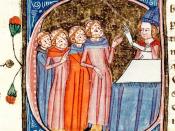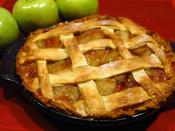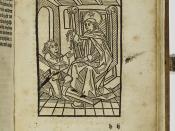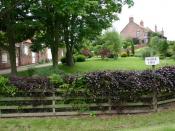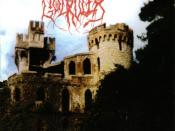On the negative side discussions of what happened in the Middle Ages are apt to be obscured by the fact that so many documents have been lost, especially during the ravages of the Black Death. On the positive side, however, more and more discoveries are constantly made, so that if we cannot say with certainty that a particular thing was not done by our ancestors, we can often say with cer- tainty that a particular thing was done.
In the field of devotion the findings of scholars are especially rich, and certain elements, universally present, make a very rich and varied pattern. From the days of the early Church right through the Middle Ages men and women were at work finding ways of prayer. Much of the thought and fancy that today are employed (in so far as they exist at all) on novels, movies and love songs, were thrown into the worship of God, into the perfect- ing of liturgical worship and int6 extraliturgical devotions, prayers and hymns.
Long after the Reformation, as Dr. Helen White (1) has so well shown, Catholic books of devotion remained the staple for the English people, for whom no more such books were being written by the Reformers.
In all that comes to us, whether from the earliest centuries or from the Middle Ages, we find three strands, sometimes separated, sometimes mingled: vocal prayer, bodily prayer (i.e. kneeling, standing, prostrating, beating the breast and such like) and medi- tation. Let us look at these as we find them practised by our ancestors and as they came to be united in the prayer of the Rosary.
For a very long time the Rosary was known as Our Lady's Psalter. As late as the last quarter of the fifteenth century Alanus de Rupe protested vigorously against "Rosano", "Chapetet" or "Corona" as worldly names and insisted on the title Our Lady's Psalter being retained. The reasons for this name are interesting.
The Psalms of David were the staple of devotion both in the early Church and the Middle Ages. Both before and after their arrange- ment in the Office, it was a work of devotion, a usual penance, to recite the Psalms~ither the entire hundred and fifty or what was known as a quingena-fifty psalms, or one third of the whole.
The Divine Office itself was, like the Mass, long sung before it came to be recited. In his Life of St. Dominic Father Bede Jarrett remarks that it would have been unheard of at that date to sub- stitute private recitation for public chanting-that not rehgio'us only but canons sang the Hours of God's praises and that the people were expected to attend, at the very least, Prime and Compline and to take part in them in their parish churches. Not, he adds, that St. Dominic would have been tempted to make such a change. He loved these solemn and joyous praises of God and would go from friar to friar exclaiming, as they sang, "Fortiter, fratres." Often in the Middle Ages we find the Psalms adapted to the praises of Mary-especially in England, where medieval devotion to Our Lady was intense. In the twelfth century one such arrange- ment of the Psalms is attributed to St. Anselm, Archbishop of Canterbury. It consists of one hundred and fifty quatrains, each starting with the word Ave. Father Thurston quotes the first:
